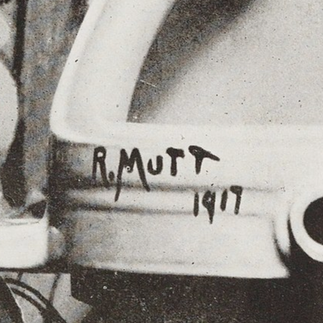Can Duchamp's 'Fountain' be considered art?
- Tatyana
- Feb 3, 2022
- 2 min read
Updated: Dec 19, 2022
In 1917, Marcel Duchamp went to Mott’s Plumbing, purchased a porcelain urinal, signed it 'R. Mutt, 1917,' and submitted it to an art exhibition as a sculpture.
The Society of Independent Artists was a newly established exhibition group in New York, which Duchamp himself was part of as both a founding and jury member. The exhibition to which Duchamp submitted the urinal was intended to be a great celebration of modern art, and the members had agreed that they would accept every single work of art submitted to them - no matter what.
So when Duchamp submitted the urinal under a pseudonym, he was testing the jury of what was considered to be the most progressive art institution of the time.
And they failed miserably.
The urinal was rejected, and excluded from the exhibition, and a furious Duchamp resigned from the committee in protest.
Duchamp and two of his friends (Henri-Pierre Roche and Beatrice Wood) recovered the urinal, named it Fountain, had it photographed by Alfred Stieglitz, and published it in a journal (The Blind Man), they had created.

In the journal, they listed the reasons why Fountain was rejected, and defended it as a work of art.
Today, Duchamp’s Fountain is one of the most significant works of art in our recent history that challenged the very notion of art itself.
By simply turning it on its side, signing it, and placing it on a pedestal, Duchamp forced us to consider the urinal in a new light. So although Duchamp didn’t make the urinal, he made it into a work of art by means of his authority as an artist. As written in the journal: “Whether or not Mr. Mutt with his own hands made the fountain or not has no importance. He CHOSE it.”

With humor, wit, and courage, Duchamp fearlessly challenged the jury selection of America at the time, and in doing so, raised some important philosophical questions concerning art.
What is art? What is an artist? Can art be a simple idea, or concept? Or does it have to be made by the artist for it to be considered art? Does art simply constitute a transformation? Whether that be the transformation of a blank canvas into a painting? Or the transformation of an ordinary object into something more noble?
So Duchamp’s iconoclastic institutional critique, while absurd in its manner, was also incredibly thought-provoking, and certainly stirred ideas that were very NEW at the time.
While the original Fountain was lost, Duchamp later made replicas, together with a bigger series of what he called his ‘READYMADES.’ These were ordinary objects that he, as the artist, put on pedestals, and designated as works of art.
How would you define art?
“He took an ordinary article of life, placed it so that its useful significance disappeared under the new title and point of view – created a new thought for that object.”
FUN FACT: One of Duchamp’s Fountain replicas was peed on in Tate Modern in the year 2000 by the collaborating performance artists Cai Yuan and Jian Jun Xi (they peed on the vitrine).


















